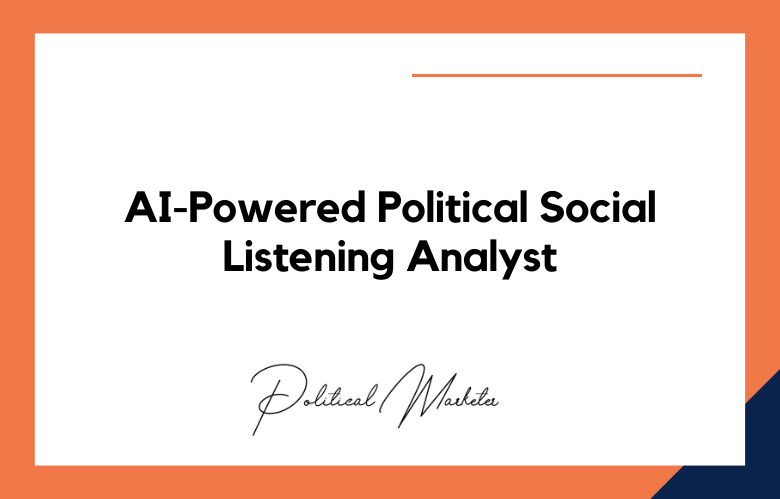Election forecasting is tricky, as we often see surprising outcomes despite the most sophisticated models and predictions. In recent years, however, the growing availability and application of technology across the field has begun to change the game.
From data-driven analytics to social media monitoring, a wide range of new tools and methods are available for political analysts and observers. This blog will explore how these technological advancements have the potential to improve forecasting accuracy and shape the way we measure electoral outcomes.
How can we Accurately Forecast Election Results?
Big Data Analytics:
Big data analytics is one of the most significant technological developments that impact the forecasting process. From poll numbers to social media trends and search engine queries, the ability to analyze vast quantities of data in real-time allows experts to stay ahead of changes in voter behavior and identify emerging patterns and trends.
Machine learning algorithms can analyze data to identify critical features associated with different results. Identifying unique patterns associated with voting behavior makes it easier to design models that also consider the context and dynamics of modern political campaigns.
Social Media Monitoring:
Social media monitoring has become an increasingly valuable tool for political scientists and forecasters. Social media provides us with millions of real-time data points from around the world, capturing the pulse of public opinion in a way that traditional polling can’t match.
Analysts can better track voter sentiment, identify critical issues, and isolate trends by analyzing data from social networks like Twitter, Facebook, and Instagram. In fact, during the 2016 US presidential election, social media data helped track the growth and decline of support for candidates, along with their most popular themes.
Predictive Modelling:
Earlier election forecasting models were primarily based on polling data, but we are moving towards more sophisticated predictive modeling today. These models leverage data from various sources—polls, social media, and weather—that could impact voter behavior.
Data scientists can use machine learning algorithms to create more accurate models (based on multiple data sources) that can account for the full range of factors that shape an electoral outcome. For instance, these models can consider factors like the economy, demographics, and sentiment data to build more nuanced predictions.
Network Modeling:
Network modeling is one of the most promising areas of technological development in forecasting. Network models simulate the relationships and interactions between different system elements and help predict how one change (e.g., a key endorsement or a scandal) may impact numerous other factors in a complex system like an election.
For example, news spread through social networks, media outlets, and interpersonal communication can all be modeled based on their likelihood of being shared on a measurement scale. By better understanding these dynamics, we can more accurately forecast the outcome of a given election.
The Science of Election Forecasting: Unveiling the Secrets Behind Accurate Predictions
Election forecasting is an intricate science that involves the analysis of various factors that influence voter behavior, such as demographic trends, historical voting patterns, and the current political climate.
The key to accurate election predictions lies in the quality and quantity of data used. The best election forecasters rely on advanced statistical models incorporating millions of data points, ranging from social media sentiment to economic indicators, to build a comprehensive picture of the voting public.
One of the most essential tools in election forecasting is the exit poll, which is conducted on election day to capture the opinions and behavior of voters as they leave polling stations.
Exit polls allow forecasters to not only predict the overall outcome of an election but also to analyze voter trends and shifts in support among different population segments. Over the years, exit polls have proven highly reliable, with many predictions falling within a few percentage points of the actual result.
Cracking the Code: Innovative Approaches to Forecast Election Results
Election forecasting has been a hotly debated topic for decades. While some traditional methods, such as polls and surveys, have proven moderately accurate, they can only provide insights for a limited timeframe. In recent years, however, innovative approaches to election forecasting have emerged, incorporating machine learning, data analytics, and social media analysis techniques.
One method that has gained traction is predictive modeling using big data. Predictive models can identify patterns and signals that traditional forecasting methods would otherwise miss by analyzing large volumes of data, including social media posts, news articles, and geospatial data. These models can then be used to generate accurate and timely predictions of election outcomes.
Beyond Polls: Exploring Data-driven Techniques for Precise Election Projections
Understanding the Role of Data in Elections
Data has become an increasingly important factor in predicting election outcomes. With the rise of technology and access to vast information, data-driven techniques have become a powerful tool for making precise election projections.
Utilizing Big Data Analysis
Extensive data analysis involves collecting and analyzing large datasets to identify patterns and trends. In elections, this can include analyzing voter demographics, social media activity, and polling data to gain insights into voting behavior.
Machine Learning Algorithms
Machine learning algorithms are computer programs that can learn from data and make predictions based on patterns identified in the data. These algorithms have been used to accurately predict election results by analyzing historical voting patterns and current polling data.
Sentiment Analysis
Sentiment analysis is a technique that involves using natural language processing (NLP) to analyze social media posts, news articles, and other sources of text data to gauge public opinion on political candidates and issues.
Predictive Modeling
Predictive modeling uses statistical techniques to analyze past election results and create models that accurately predict future outcomes. This approach considers various factors such as voter demographics, economic indicators, and historical voting patterns.
Poll Aggregation
Poll aggregation combines multiple polls from different sources to create a more accurate picture of voter sentiment. This method helps to reduce bias and uncertainty associated with individual elections.
Geographic Analysis
Geographic analysis involves mapping out voting patterns across different regions to identify areas where specific candidates or parties may have an advantage or disadvantage. This information can be used to target campaign efforts more effectively.
Voter Turnout Projections
In addition to predicting which candidate will win an election, data-driven techniques can also be used to estimate voter turnout rates based on historical trends and demographic factors.
Real-time Tracking
With the availability of real-time data through sources like social media and news outlets, it is now possible to track election results as they are happening. This allows for more accurate and timely projections.
The Future of Data-driven Election Projections
As technology advances, data-driven election prediction techniques will become even more sophisticated. With the potential to improve accuracy and reduce bias, these methods have the potential to revolutionize the way we approach election forecasting.
Predictive Analytics: Revolutionizing Election Forecasting
Predictive analytics has emerged as a disruptive technology that is revolutionizing the field of election forecasting. By allowing political analysts to leverage vast amounts of data and cutting-edge algorithms, predictive analytics has enabled unprecedented accuracy and foresight in predicting election outcomes. In today’s high-stakes, fast-moving political landscape, these advances are crucial for political campaigns, news outlets, and voters.
With the help of predictive analytics, political analysts can now forecast the outcome of an election with a high degree of confidence. This is achieved by analyzing various data points, including polling data, historical voting patterns, demographic trends, social media activity, and weather patterns.
By combining these inputs with sophisticated machine learning algorithms, predictive analytics can identify invisible patterns and correlations to the human eye, resulting in highly accurate and granular forecasts.
Conclusion:
There is no question that technology significantly impacts how we predict and understand elections. By leveraging increasingly sophisticated algorithms and data, forecasters can better track emerging trends, build more sophisticated models, and parse out the deeper dynamics of each race.
The increasing availability and accessibility of technology mean that aspiring political science and data science students have an excellent opportunity to build their skill sets and contribute to this rapidly evolving field. Together, these advances promise to help us better understand our democracy and ensure that our election outcomes are based on better-grounded predictions.
Call: +91 9848321284
Email: [email protected]










